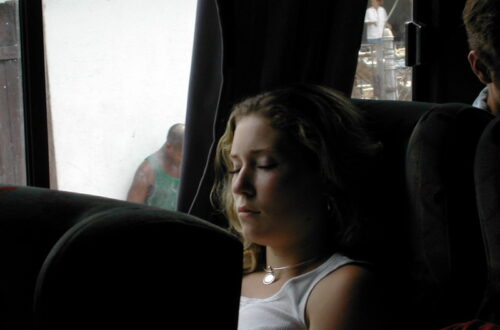
Caramel, Beige and Pink
Race is a mirage but one that humanity has organized itself around in very real ways. – Ibram X. Kendi
My son asked me the other day about our different skin colors. He’s six, and something that might have been affecting him for several years is suddenly something he can put into words: “What color am I Mama?”
“You have absolutely beautiful, caramel-colored skin,” I said.
“What color are you?” he asked. I thought for a moment. “Pink and spotty,” I said. I’m an aging surfer, and this was the most accurate description I could come up with.
I wondered if I had been correct in how this conversation went. He seemed quite satisfied with the descriptions and went on playing.
Last week I was very proud of our county when I attended the conversation on racism between Ibram X. Kendi and Nic Stone held by Bookshop Santa Cruz. The authors are on a book tour for their new release, “How To Be A (Young) Antiracist.” The event had to be moved to the Kaiser Arena, and even that huge venue sold out. It seemed the whole town turned out in droves. It reminded me of the rare years when the sandbar shows up along the Cowell Beach cliff and absolutely everyone plays in the ocean together.
I’ve heard many, many white friends questioning what they can do about racism in America. They want to be allies, they want to take action, but they are still unsure how to start. The message of the evening was quite clear; you start by exploring your own inherent racism, and you talk with grace and curiosity to other white people who haven’t taken that step yet.
If you’re slamming on the brakes here, denying you are racist, then perhaps you didn’t grow up in America?
The authors made the wonderful analogy of growing up in a pool, then being surprised you are wet. Racism is built into our history, our systems, and our country. It’s everywhere, and it’s terrible for all of us. If you don’t think you’re racist, they ask, then how do you define racism?
Language for everything about racism is a key point in their book. If you define racism as having deeply learned ideas about different groups of people not being inherently the same, it makes it a bit easier to understand, and much easier to forgive ourselves and move forward.
I had a student do a biology report on racism the year after the genetics study completely debunking genetic differences between races came out.
How is it that at the time, the idea that people born in different native groups in Africa are more genetically different from each other than any African is to a person with European ancestry was so shocking?
If one traces the path of humans over the span of evolutionary history, it actually makes sense. In fact, the two most distinct genetic races in the world are the Aborigines of Australia and those native to the Kalahari Desert in southern Africa. An individual from either would have been classified as “colored” under the Jim Crow laws in America. It’s completely arbitrary.
I love that we have a liberal majority in Santa Cruz County. I love that we are thinkers, I love that we seem to always have high ideals and intentions. But we know we have a long way to go. I’ve experienced people who think they are the most unracist doing and saying terribly racist things.
When I told people that we were preparing to adopt a child from foster care in Santa Cruz County, two people actually expressed their excitement about the idea that I could adopt a black child, but grimaced when I said that given the statistics in our county, we would likely welcome LatinX children into our home.
When we moved to Watsonville from the West Side, we were warned by white friends about gang activity and lack of safety, even though statistically our neighborhood in Watsonville had 75 times fewer drug-related crimes reported than where we lived in Santa Cruz.
When we got to Watsonville, we learned that our babysitters’ mom called her a “coconut” when she did something foolish, which meant smart like a Latina on the outside and dumb like white lady on the inside. Absolutely no one, in any of these situations, thought they were a racist, or saying something racist.
It’s not fun to report all of this, but what really needs to end in order for our society to transform is the idea that we should not be talking about this. What also needs to end is the idea that it is not happening within ourselves and our communities. This is not a “somewhere else” problem.
Nic Stone told a story about her son, who has lighter skin than she does. When he turned six, he asked her the same question my son asked me. She told him his skin is “beige.” I breathed a sigh of relief.
We teach kids colors, don’t pretend skin color is not different, and don’t pretend it can’t be named. She’s ready for more conversations with her son about how the world may see him differently than other groups, after all, she wrote the book.
My next step in becoming the anti-racist I want to be is getting ready to have those conversations with my children and my students and my colleagues and friends, anytime they come up, with no fear.
Lisa Catterall teaches STEAM, math, science, and art at Mount Madonna School and is a senior associate of the Centers for Research on Creativity. She lectures and trains teachers and administrators on innovation in education in Beijing, China. Lisa has five children and lives in Santa Cruz County.






